Health Care > EXAM > NBDE Part II - 2006 Exam B QUESTIONS WITH COMPLETE SOLUTIONS (All)
NBDE Part II - 2006 Exam B QUESTIONS WITH COMPLETE SOLUTIONS
Document Content and Description Below
Which of the following represents the classic sign or symptom of an anteriorly displaced disc with reduction? A. Pain B. Closed lock D. Reciprocal click E. Decreased range of motion Correct Answ... er: D. Reciprocal click Acute pyogenic bacterial infections produce A. leukopenia. B. lymphopenia. C. neutropenia. D. leukocytosis. E. lymphocytosis. Correct Answer: D. leukocytosis. Blade and root form implants are examples of which of the following types of implants? A. Endosseous B. Transosteal C. Subperiosteal D. Ceramic Correct Answer: A. Endosseous Which of the following teeth are the most susceptible to root fracture during extraction? A. Maxillary first premolars B. Maxillary second premolars C. Maxillary third molars D. Mandibular first premolars Correct Answer: D. Maxillary first premolars Each of the following is an indication for a posterior maxillary osteotomy EXCEPT one. Which one is this EXCEPTION? A. Correction of mandibular prognathism B. Intrusion of the tuberosity, preparatory to denture construction C. Closure of the anterior open bite in some cases of apertognathia D. Skeletal arch width discrepancies that require lateral positioning of E. posterior segments Correct Answer: A. Correction of mandibular prognathism Two months after an extraction, a patient becomes ill with hepatitis. The dentist may be at fault if he A. does not wear a mask. B. does not use an antiseptic before injection. C. does not wear gloves when performing surgery. D. uses cold sterilization for his surgical instruments. Correct Answer: D. uses cold sterilization for his surgical instruments. Following immediate denture surgery, the best suture technique to use would be A. continuous. B. interrupted. C. vertical mattress. D. never use sutures. E. horizontal mattress. Correct Answer: B. interrupted. For oral sedation in the dental setting, the most ideal group of agents is A. narcotics. B. barbiturates. C. antihistamines. D. benzodiazepines. E. anticholinergics. Correct Answer: D. benzodiazepines. The blade type dental implant is most useful for A. single tooth replacement. B. anterior maxillary edentulous areas between first bicuspids. C. edentulous posterior areas without posterior abutment teeth. D. rehabilitation of a totally edentulous ridge (especially the mandible) with a fixed appliance. Correct Answer: C. edentulous posterior areas without posterior abutment teeth. In vestibuloplasty, a skin graft functions to A. prevent reattachment of muscle to periosteum. B. promote osteogenesis to establish a bony barrier to loss of sulcus depth. C. inhibit fibroblasts in the underlying tissue. D. provide an adequate amount of nonkeratinized tissue. Correct Answer: A. prevent reattachment of muscle to periosteum. The major reason for loss of transplanted autogenous third molars is A. infection. B. immune rejection. C. traumatic occlusion. D. inadequate root length. Correct Answer: C. traumatic occlusion. The split thickness skin graft vestibuloplasty provides A. an excellent vestibule, but carries high patient morbidity. B. limited vestibular extension in the anterior lingual mandible. C. the maximum ridge that is available for use in any given patient. D. only temporary increase in vestibular depth as the skin graft contracts duripg healing. Correct Answer: C. the maximum ridge that is available for use in any given patient. An "emergency" occlusal separator should be constructed for patients who has which of the following conditions? A. Myositis B. Hemarthrosis C. Capsular fibrosis D. Degenerative arthritis E. Unilateral condylar hyperplasia Correct Answer: B. Hemarthrosis To obtain the best long-term result, which of the following procedures for genioplasty is recommended? A. Silastic® onlay implant B. Proplast® chin implant C. Autogenous onlay bone graft D. Pedicled horizontal sliding osteotomy E. Allogeneic freeze-dried onlay bone graft Correct Answer: D. Pedicled horizontal sliding osteotomy The TMJ is innervated by the branches of each of the following nerves EXCEPT one. Which one is this EXCEPTION? A. Marginal mandibular B. Auriculotemporal C. Masseteric D. Mandibular division of the trigeminal E. Deep temporal Correct Answer: A. Marginal mandibular A 16-year-old patient presents with a firm, non-painful swelling in the mandibular premolar area. Adjacent teeth are vital. Radiographic evaluation reveals a discrete 4 cm radiolucency in the premolar area. Which of the following diagnostic procedures would be performed next? A. Excisional biopsy B. Aspiration C. CT scan D. Alkaline phosphatase determination E. Complete blood cell count with a differential Correct Answer: B. Aspiration The most likely reason for a sudden temperature elevation six days after surgery is A. S.B.E. B. atelectasis. C. wound infection. D. urinary tract infection. Correct Answer: C. wound infection. Which of the following groups of cells are significantly phagocytic? A. Neutrophil and basophil B. Basophil and eosinophil C. Neutrophil and histiocyte D. Neutrophil and lymphocyte E. Plasma cell and lymphocyte Correct Answer: C. Neutrophil and histiocyte Which of the following is the least likely use of arthroscopy of the TMJ? A. Diagnosis of disk perforations B. Lysis of adhesions C. Disk manipulation D. Therapeutic lavage E. Repair of disk perforations Correct Answer: E. Repair of disk perforations A chronic infection of the mandible of a middle-aged female patient has been treated with oral penicillin for three weeks. The primary problem appears to be resolved, but the patient now has many white patches on the dorsum of the tongue and buccal mucosa. Which of the following is the appropriate care for this patient? A. Discontinue all antibiotics. B. Discontinue penicillin and prescribe nystatin troches. C. Discontinue penicillin and prescribe a mouthwash containing metronidazole. D. Discontinue penicillin treatment and substitute a broad spectrum antibiotic. Correct Answer: B. Discontinue penicillin and prescribe nystatin troches. Which of the following symptoms is NOT commonly associated with acute suppurative osteomyelitis? A. Deep, intense pain B. High, intermittent fever C. Paresthesia or anest [Show More]
Last updated: 2 years ago
Preview 1 out of 23 pages

Buy this document to get the full access instantly
Instant Download Access after purchase
Buy NowInstant download
We Accept:

Reviews( 0 )
$10.00
Can't find what you want? Try our AI powered Search
Document information
Connected school, study & course
About the document
Uploaded On
Sep 27, 2022
Number of pages
23
Written in
Additional information
This document has been written for:
Uploaded
Sep 27, 2022
Downloads
0
Views
38












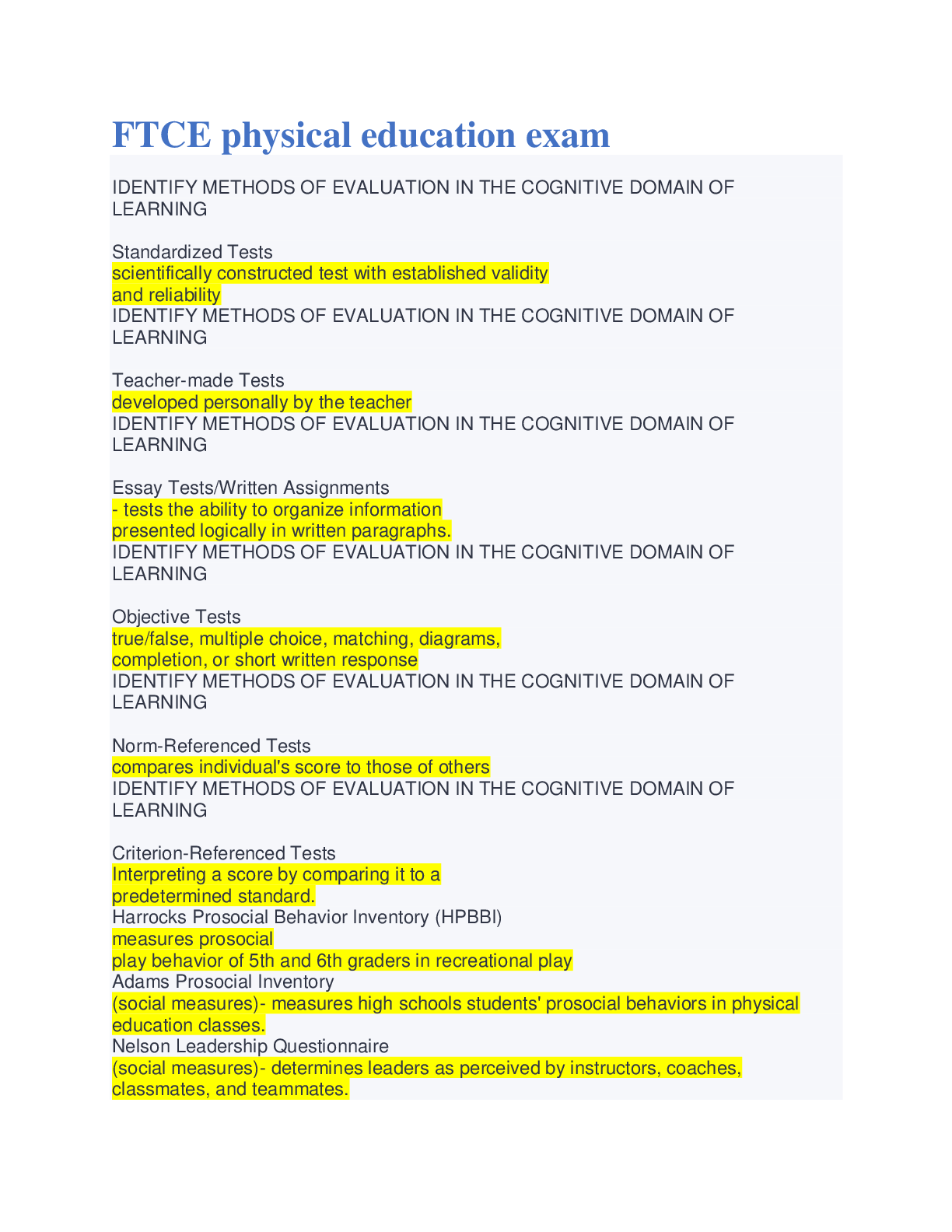
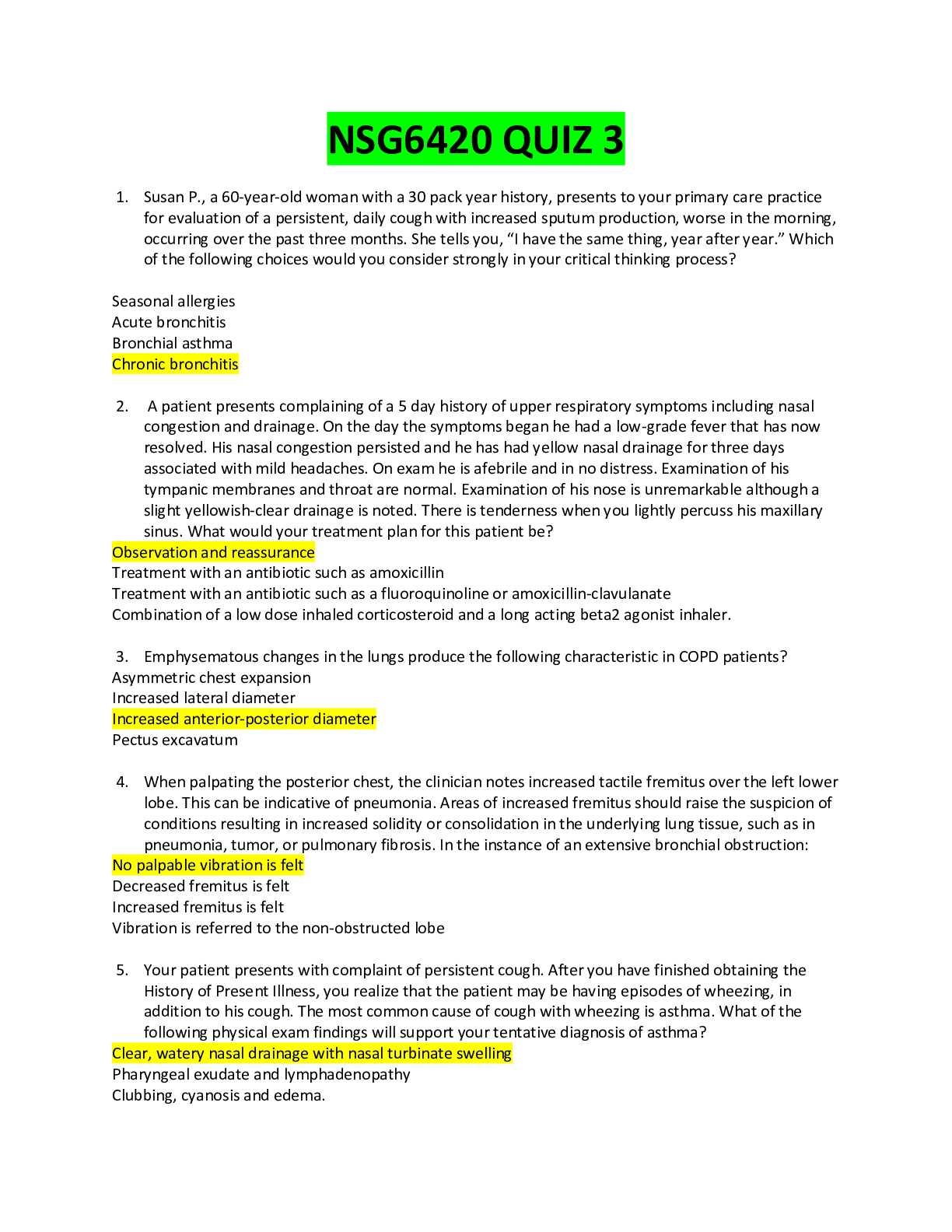
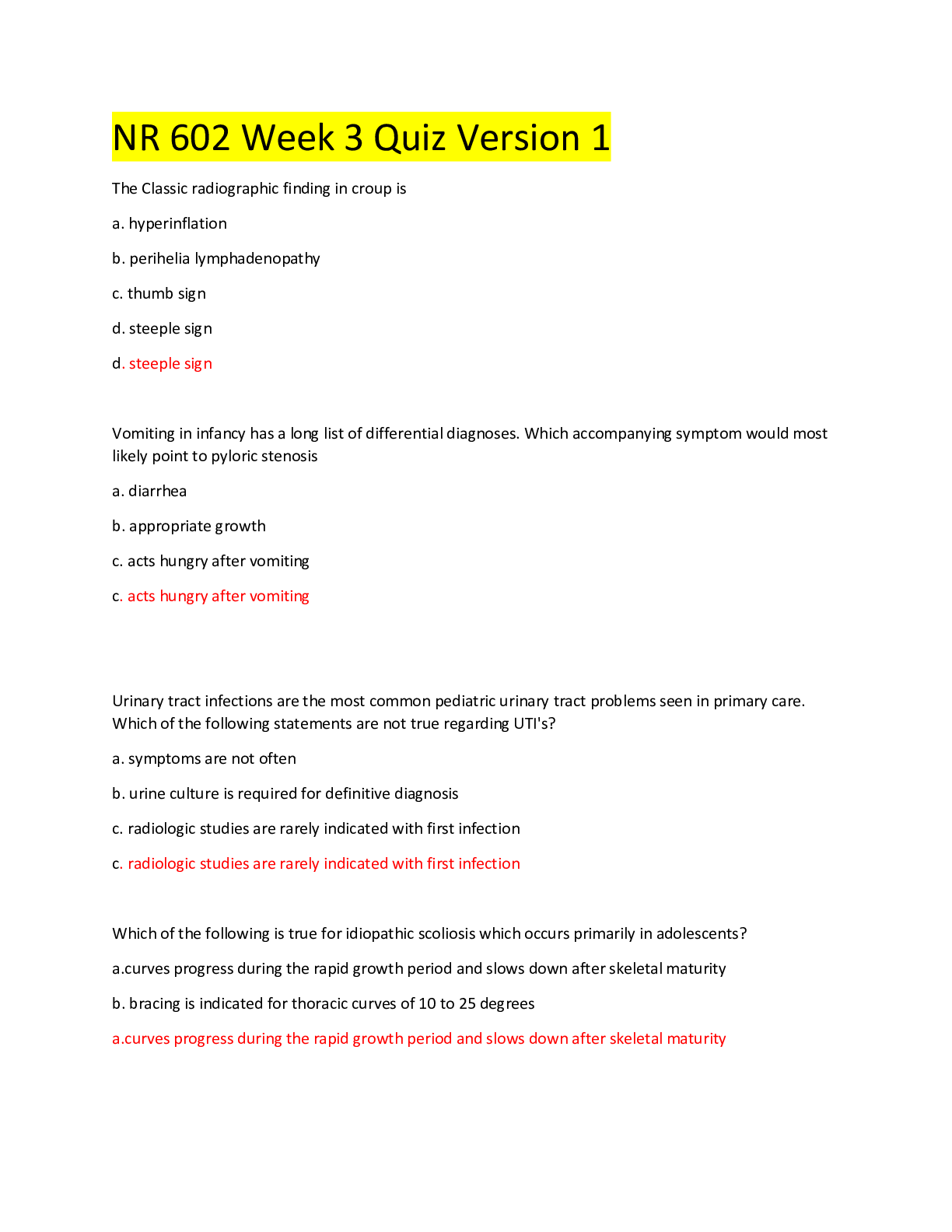
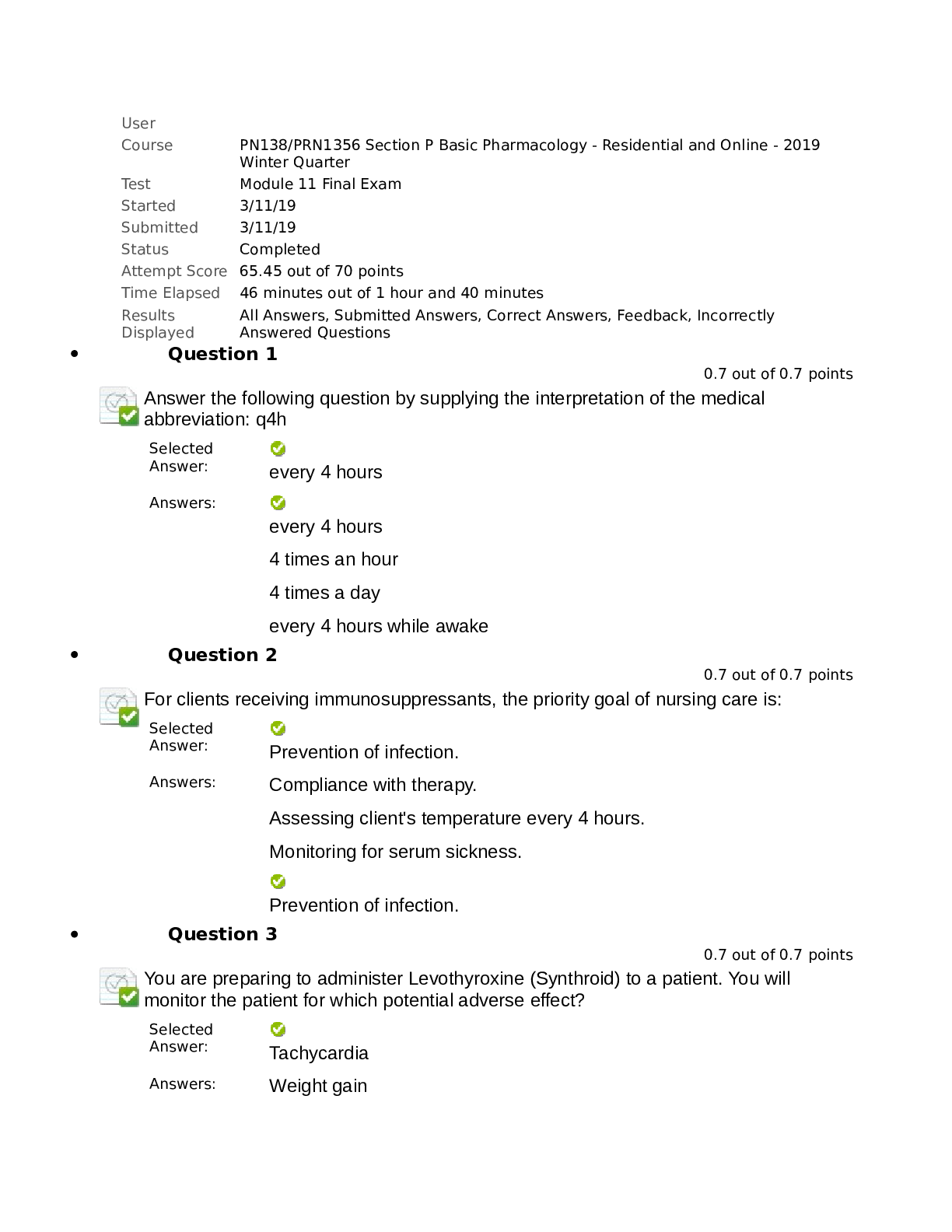
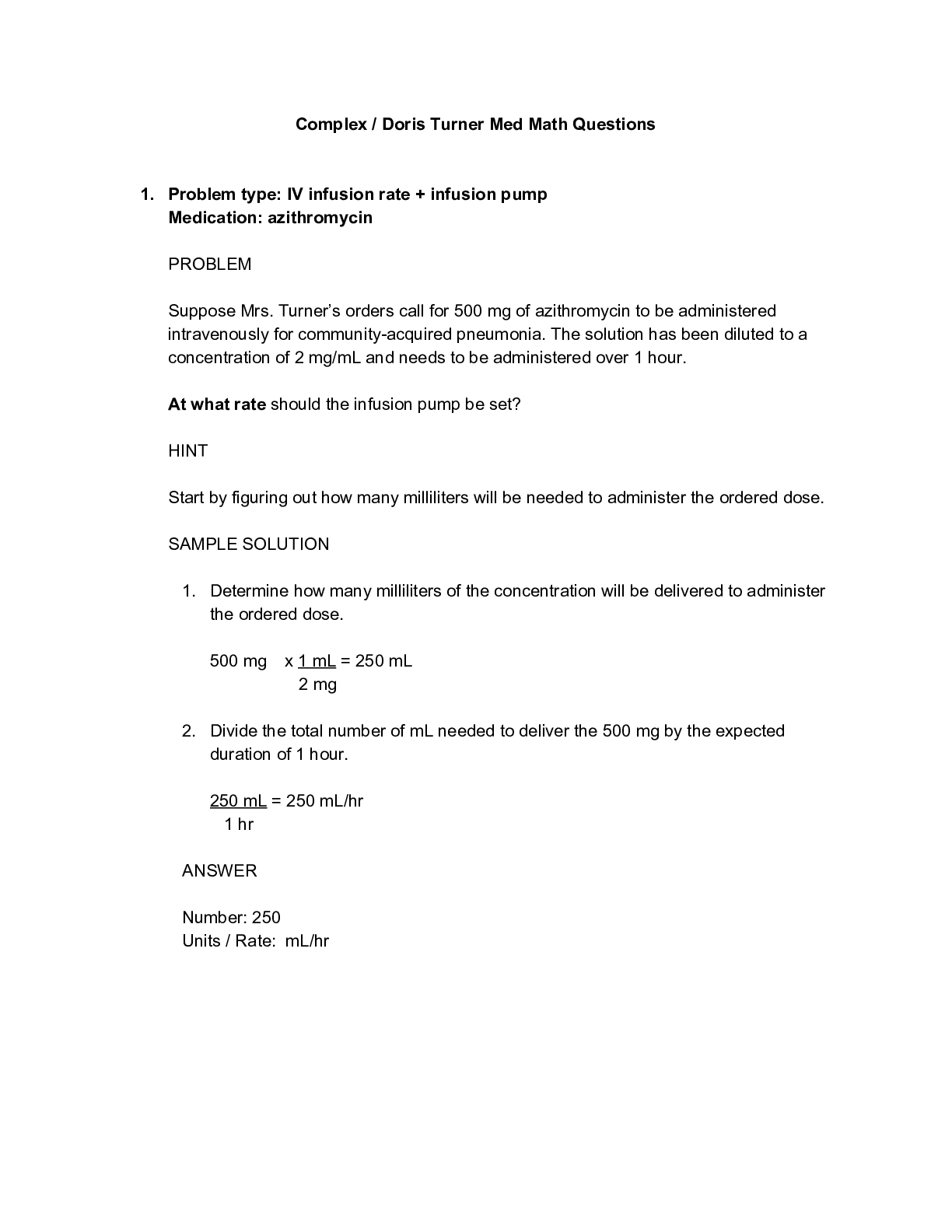

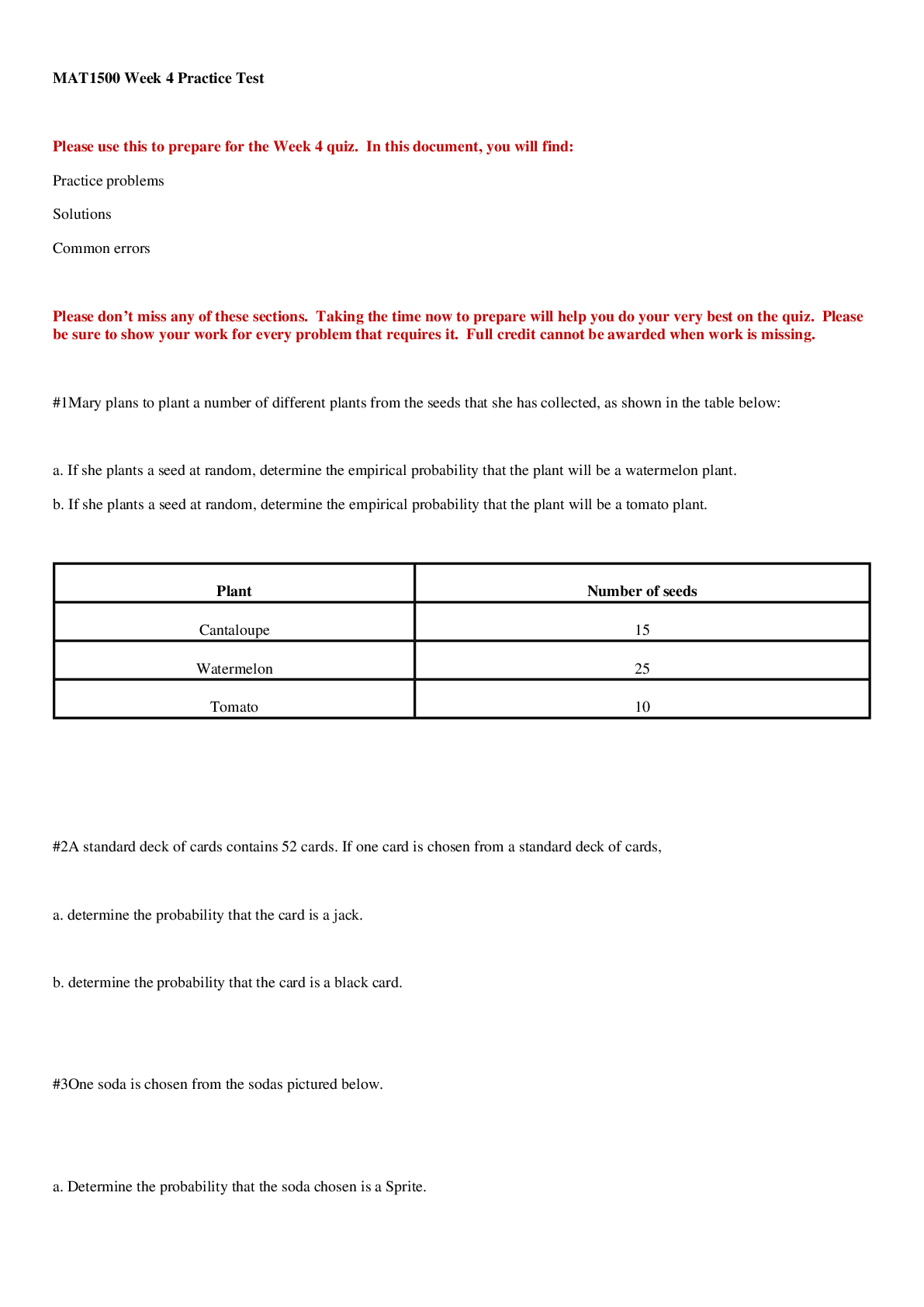




.png)

